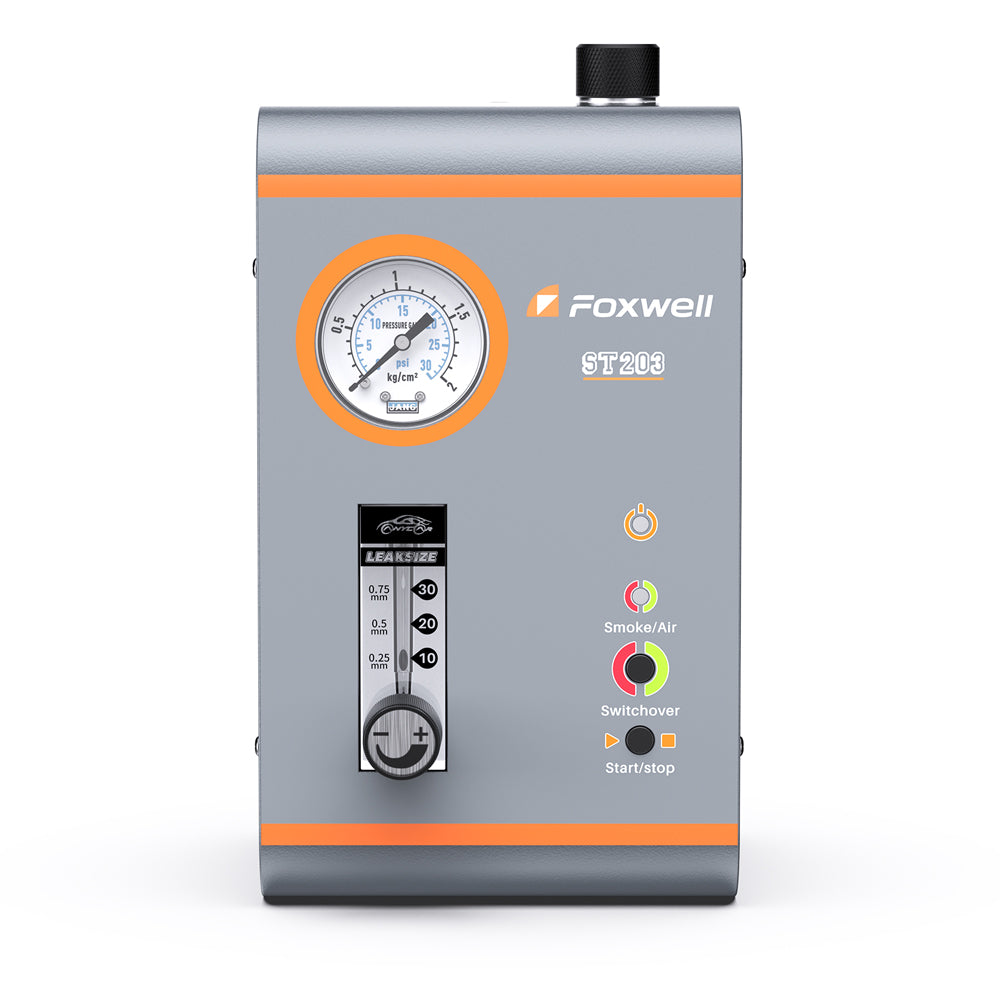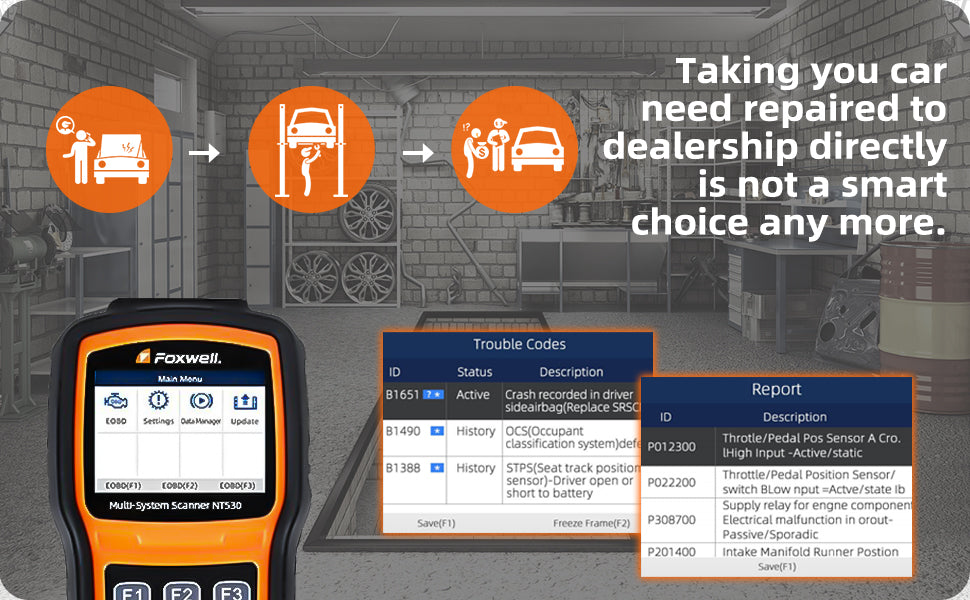Both professionals and enthusiasts use OBD2 scanner to connect with a car's computer system to monitor engine and vehicle performance - offering additional specialized functions like the TPMS reset feature that's becoming increasingly crucial in modern vehicles.

Overview of OBD2 Scanners
OBD2 scanners are second-generation onboard diagnostic tools designed to monitor data and troubleshoot various vehicles.
Plugged into the OBD2 port located under the dashboard, these devices read information from electronic control units that control various vehicle functions, from generic fault codes that apply across vehicles and all brands to manufacturer-specific codes that offer more specific insight - OBD2 data can help diagnose issues more easily while assuring vehicles run efficiently while meeting emission standards.
Importance of Tire Pressure Monitoring Systems in Modern Vehicles Tire Pressure Monitoring Systems are modern vehicle safety features designed to alert drivers when the air pressure in one or more tires drops dangerously low, potentially leading to unsafe driving conditions or tire failure.
Proper tire pressure is important not only for vehicle safety but also fuel economy and tire longevity—and has been mandated by law in many countries, such as the US, since 2007. OBD2 scanners that support TPMS reset capabilities become even more valuable with time.
Understanding OBD2 Scanners with TPMS Reset Capabilities
OBD2 Scanners
OBD2 scanners are tools used to access information sent by various systems and sensors on a vehicle—and top-tier options like the OBD2 Foxwell scanner excel here.
They allow accessing diagnostic trouble codes, monitoring real-time sensor data from sensors, and performing system tests - plus advanced TPMS scanners offer features like ABS diagnostics and TPMS reset that provide comprehensive vehicle checks.
Why Is TPMS Crucial?
A tire pressure monitoring system is essential in maintaining correct tire pressure for optimal vehicle performance and safety.
It reduces the likelihood of tire blowout while increasing vehicle handling, decreasing tire wear, improving fuel economy, and decreasing potential tire blowout risks.
A TPMS alert allows drivers to address tire pressure issues before they become dangerous, protecting themselves and other road users.
Key Features of OBD2 Scanners with TPMS Reset Capabilities
Compatibility with Different Vehicle Models
The top OBD2 scanners with TPMS reset features can interact with domestic and foreign TPMS sensors for maximum flexibility when servicing automotive environments of various sorts.
They offer mechanics a broader operational range, which makes these tools indispensable in their daily work routines.
Accuracy and Reliability in TPMS Reset
Accurate resetting and calibration of the tire pressure monitoring system are crucial to ensure its proper function after maintenance, such as tire rotation or replacement.
To accomplish this task reliably, the scanner must communicate with the vehicle's ECU to confirm the accurate tire pressures being reported by the TPMS.
As vehicles incorporate electronic safety features, the value of OBD2 scanners with specific functions like TPMS reset is becoming increasingly apparent.
These scanners can support routine maintenance duties and bolster vehicle security, making them essential tools in the automotive industry.
Related Reading: Top 3 Best TPMS Tools to Buy in 2025
How to Use an OBD2 Scanner with TPMS Reset
Use of an OBD2 Scanner With TPMS Reset Being familiar with an OBD2 scanner equipped with TPMS reset functionality is an invaluable asset for modern vehicle maintenance professionals.
Step-by-Step Guide on Utilizing the TPMS Reset Function
Below, we offer a step-by-step guide on utilizing this feature, specifically regarding Foxwell products - one of the premier suppliers of automotive diagnostic tools - manufactured products available on the market.
Prepare Your Equipment: Before using your Foxwell scanner (like the Foxwell NT530), ensure it is fully charged. Also, ensure the firmware and software have been upgraded for compatibility with new vehicle models and features.
Locate an OBD2 Port: Your vehicle typically has an OBD2 port under its dashboard near its steering column, although this location can differ. If you need clarification, please consult your owner's manual.
Connecting the Scanner: Insert your Foxwell scanner into your vehicle's OBD2 port and turn on the ignition, but do not start the engine; this will power up and initialize all systems for diagnostic purposes.
Navigating to TPMS Diagnostics Area: Use the scanner's interface to locate its TPMS diagnostics section.
Foxwell scanners typically offer user-friendly interfaces with either touchscreen or button navigation that mark where various functions, like TPMS diagnostics, can be found.
Perform TPMS Reset: Follow the on-screen instructions to reset or relearn your vehicle's TPMS system. This may vary depending upon its make and model. the scanner may instruct you to provide specific information or simply proceed directly to resetting TPMS sensors.
Check for Error Codes: Your scanner can display any codes that indicate potential issues to identify any possible TPMS-related error codes and provide further insight into any necessary solutions.
These could indicate issues like sensor malfunction or communication with the vehicle ECU that need further attention.
Clear Codes: If your scanner detects trouble codes, clear them after making necessary repairs or adjustments. This feature should also be available directly within the TPMS menu.
Test the System: After clearing all codes, it's advisable to test drive your vehicle to ensure the TPMS alert light does not return and all sensors usually function.
Common Issues and Troubleshooting Tips
Scanner Not Communicating: If the Foxwell scanner is not communicating with the vehicle's computer, make sure that the ignition is on and that the OBD2 connector is secure; also, make sure the scanner matches your vehicle model and year.
Persistent TPMS Error Codes: If error codes continue after resetting, this could indicate a malfunction with your vehicle wiring or receiver system. Also, check for battery life and functionality issues with each sensor.
Erratic Tire Pressure Readings: After performing a TPMS reset, if tire pressure readings still appear incorrectly after calibration has taken place, miscalibrated sensors could cause this, or you might need to perform manual relearning procedures as directed by your scanner.
Firmware/Software Issues with Diagnostic Scanners: Regular updates are vital to ensure optimal functionality of diagnostic scanners such as Foxwell.
Ensure your Foxwell scanner can access the most up-to-date software from their official site to support newer vehicles and TPMS technologies.
Maintenance Tips Using OBD2 Scanner with TPMS
Maintenance Tips with OBD2 Scanner and TPMS Regular OBD2 scanner maintenance with Tire Pressure Monitoring System functionality is an integral component of maintaining safe driving conditions and efficient vehicle performance.
Here, we explore how regular checks and resets of the TPMS can significantly impact your vehicle.
Checking Tire Pressure Regularly
- Regular Monitoring:
- Understanding Tire Pressure Recommendations
Advantages of Proper Tire Pressure Settings: A sticker outlining recommended tire pressure settings by the manufacturer is usually found within your driver-side door or vehicle's manual.
You can then use an OBD2 scanner to ensure each tire meets these specifications and thus benefits from correct tire inflation.
- Benefits of Correct Tire Pressure Settings
Safety: Properly inflated tires decrease the risk of tire failures such as blowouts. Performance: At optimal pressure levels, better handling and braking performance is achieved, while in economic terms, this leads to better fuel economy and reduced tire wear.
How Regular TPMS Resets Benefit Your Vehicle
- Accurate Tire Pressure Monitoring
After any service that affects the tires or their pressures, TPMS recalibration becomes essential to ensure accurate monitoring and warnings from TPMS systems.
With every tire rotated or replaced and their pressures altered by services like rotation or replacement, recalibration ensures the system can identify each tire correctly while monitoring pressure accurately - thus providing reliable warnings from its alarms.
- Extending Tire Life
- Compliance With Vehicle Warranty Requirements
Maintaining vehicle warranties requires regular maintenance records to remain valid; using an OBD2 scanner to perform regular TPMS checks and resets can provide digital proof of maintenance that could support warranty claims if necessary.
- Diagnosing and Troubleshooting
Use TPMS data to diagnose other potential issues, like valve leaks or sensor failures, that could occur through consistent anomalies in tire pressure readings across different conditions.
- Environmental Benefits
Maintaining optimal tire pressure helps lower the carbon footprint of vehicles by improving fuel efficiency and decreasing premature tire wear waste.

Conclusion
Selecting an OBD2 scanner equipped with Tire Pressure Monitoring System (TPMS) reset functionality is more than a mere convenience - it's an integral component of maintaining modern vehicles safely and efficiently.
This tool equips vehicle owners and technicians alike to ensure critical safety features, like the Tire Pressure Monitoring System (TPMS), remain fully functioning at all times, directly impacting safety, efficiency, and longevity for any given vehicle.
FAQ
Can any OBD2 scanner reset my Tire Pressure Monitoring System (TPMS)?
No. Only OBD2 scanners with specific TPMS reset functionality can monitor and reset TPMS systems.
How often should I reset my vehicle's Tire Pressure Monitoring System (TPMS)?
You should reset your TPMS whenever you replace or rotate tires or when receiving a warning light without a noticeable change in tire pressure.
Should I Use an OBD2 Scanner For Tire Pressure Monitoring Systems If My Vehicle Already Has One?
Although some vehicles come equipped with a reset button for their tire pressure monitoring system (TPMS), using an OBD2 scanner provides more comprehensive diagnostic checks beyond simply resetting it.







Leave a comment
This site is protected by hCaptcha and the hCaptcha Privacy Policy and Terms of Service apply.